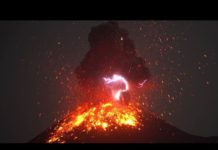The Vermilion Cliffs are the second “step” up in the five-step Grand Staircase of the Colorado Plateau, in northern Arizona and southern Utah. They extend west from near Page, Arizona, for a considerable distance, in both Arizona and Utah.
112,500 acres (45,500 ha) of the region were designated as the Paria Canyon-Vermilion Cliffs Wilderness in 1984. An even greater area was protected within Vermilion Cliffs National Monument in 2000.
Geology
The Vermilion Cliffs are made up of deposited silt and desert dunes, cemented by infiltrated carbonates and intensely colored by red iron oxide and other minerals, particularly bluish manganese. They are in the physiographic High Plateaus Section and Canyon Lands Section of the Colorado Plateau Province.
Geography
Reddish or vermilion-colored cliffs are found along U.S. Highway 89A near Navajo Bridge, and may be seen from U.S. Highway 89 close to Bitter Springs. Highway 89A runs alongside the Vermilion Cliffs for most of its route between Jacob Lake and Marble Canyon, and offers a great view of the cliffs.
In the spring, after a good winter rain, the valley between Highway 89 and the Vermilion Cliffs will be covered with a carpet of desert mallow and other spring flowers.
In the image below, Highway 89A is atop the yellow rocks capping the first step of the series, the Chocolate Cliffs, and will turn east (to the right) upon entry to the valley below, ultimately crossing the Colorado River at Marble Canyon via the Navajo Bridge.










![Scientists discover 36-million-year geological cycle that drives biodiversity Mesozoic mural depicting different ocean species that have evolved through time. [Credit: Smithsonian Institution]](https://www.geologypage.com/wp-content/uploads/2023/08/Scientists-discover-36-million-year-geological-cycle-that-drives-biodiversity-GeologyPage-218x150.jpg)





